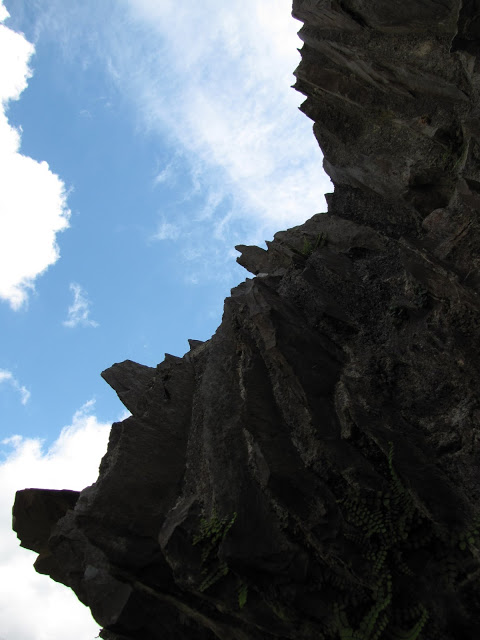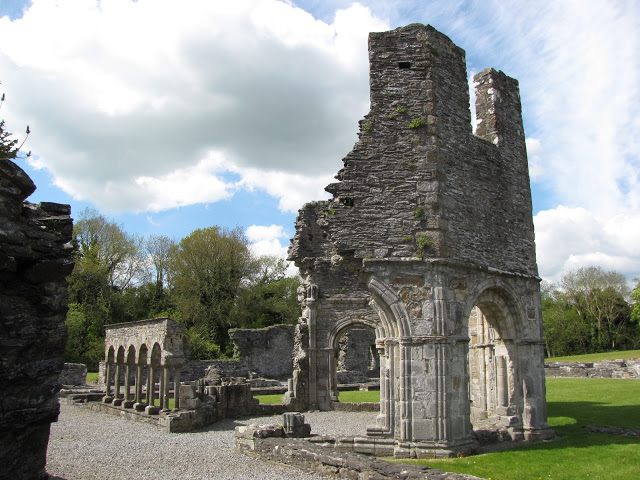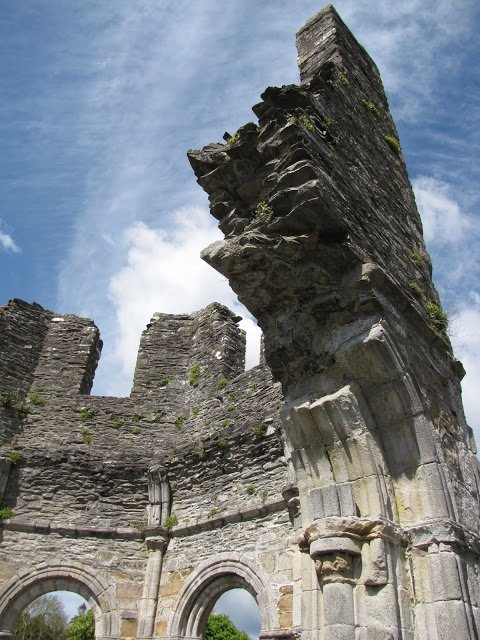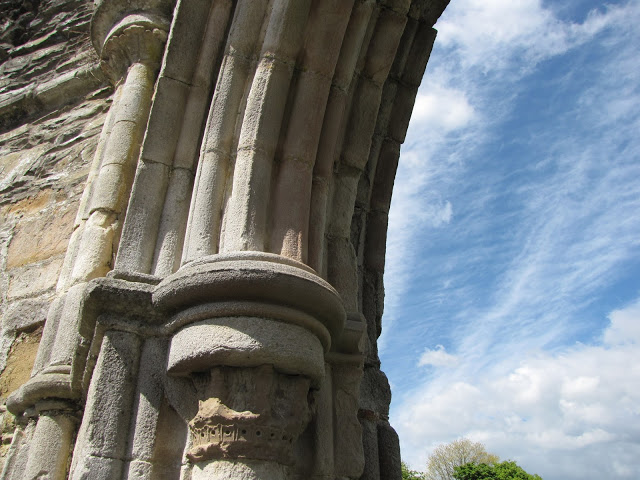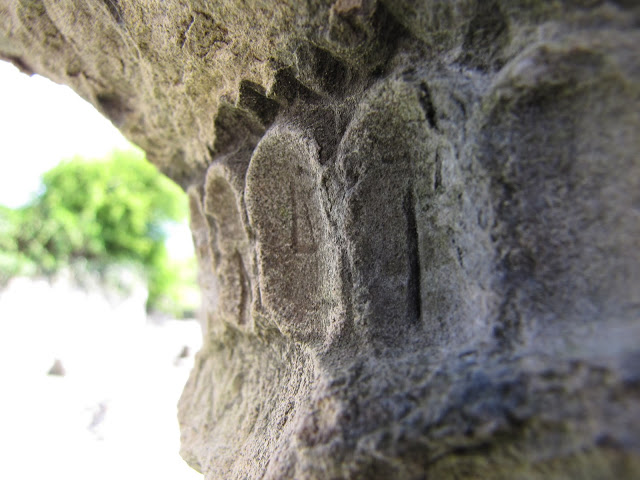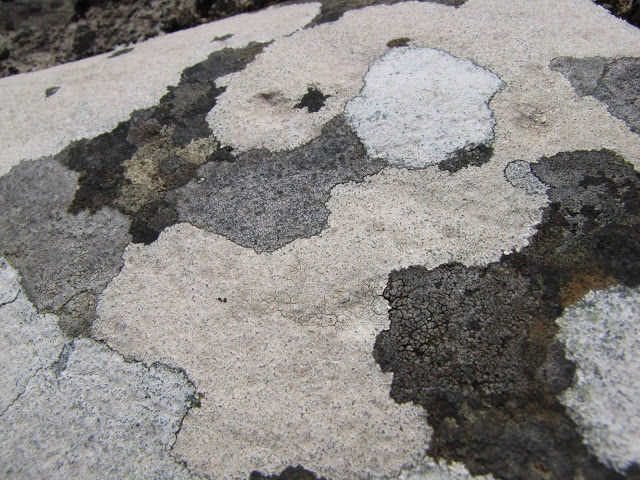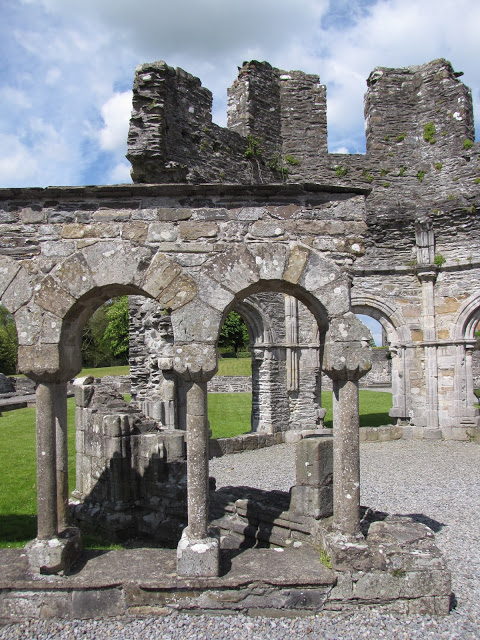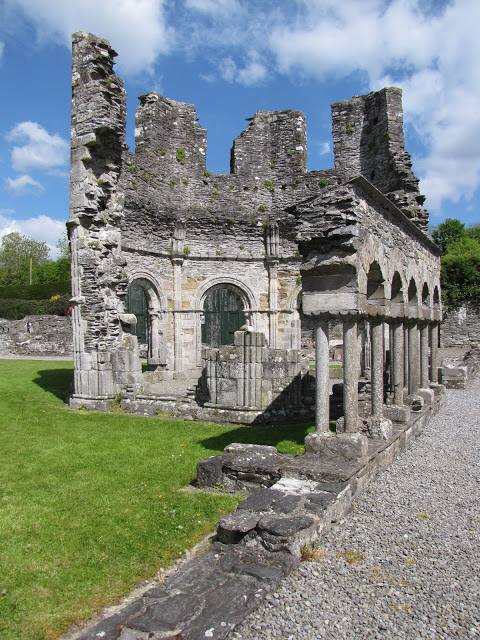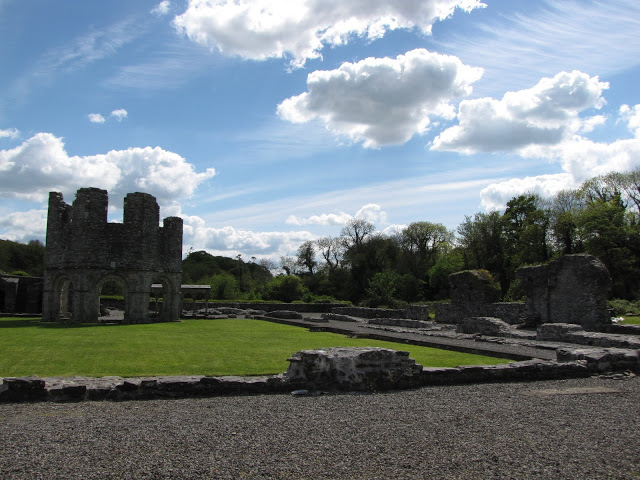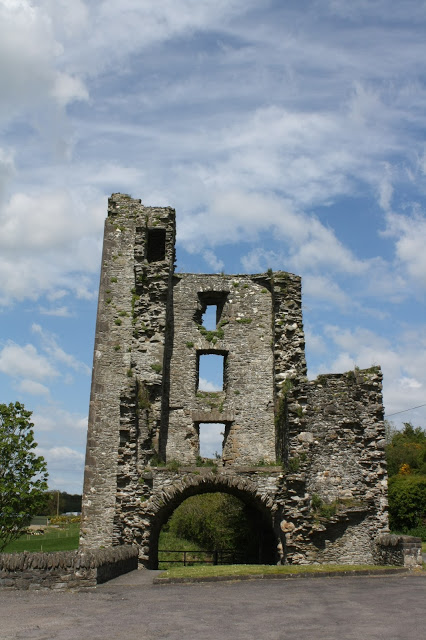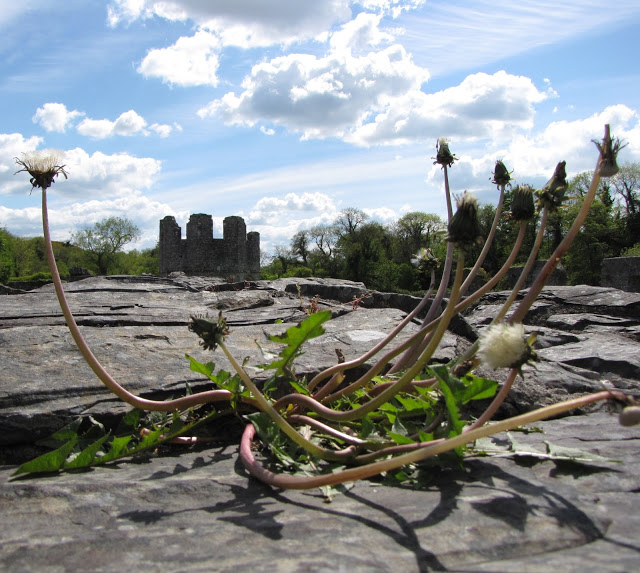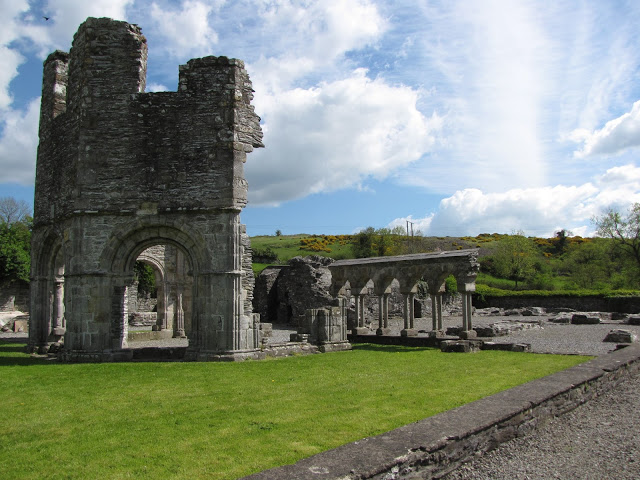
The ruins of Old Mellifont Abbey lie only 10-15 winding miles from Brú na Bóinne, but attract far fewer visitors. According to Heritage Ireland, a small entrance fee is required. However, the site is open and I must admit that we, not realizing admission was expected, skipped the visitor center and went in for free.
Although the original Anglo-Norman complex was once one of the most magnificent structures in the country and housed, at its peak, around 400 monks, it is now almost completely reduced to ruin. For an imaginative visitor, the foundation is left to map the extensive edifice, while the remaining walls of the octagonal lavabo (washing house) evoke its former grandeur.
Mellifont’s claim to fame rests dually on the unusual, partially preserved lavabo and on its status as the first Cistercian abbey in Ireland. This latter fact is of both religious and architectural historical importance, for with the introduction of a more formal, continental monastic order came a more formal, continental monastic architecture. Mellifont therefore represents the entrance point in Ireland for a style of medieval architecture that, in structure and format, already dominated in Western Europe.
Mellifont (literally, “honey fountain”) traces its origins to the mid-12th century, when Archbishop (later, Saint) Malachy invited over a group of conservative monks from Clairvaux, France in the hope that their presence would encourage less scandalous behavior in the local orders. Finding themselves unwelcome, the French monks returned home before the abbey’s completion. Yet their brief presence was apparently more influential than their departure. Not only did the construction of Mellifont continue, but several more Cistercian abbeys quickly sprung up around it. Eventually, Mellifont served as the central motherhouse for 21 lesser monasteries.
After centuries of influence and power, Mellifont was demolished in the 1500s following the Dissolution of the Monasteries. In 1556, Edward Moore built a fortified manor house using the abbey’s scavenged remains. William of Orange used the location as his headquarters during the Battle of the Boyne in 1690. The site was finally abandoned in 1727.
All photos by Renée DeVoe Mertz, May 24, 2013.



